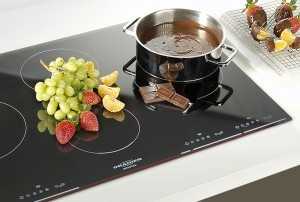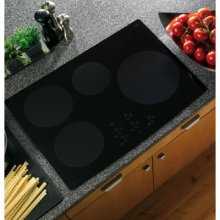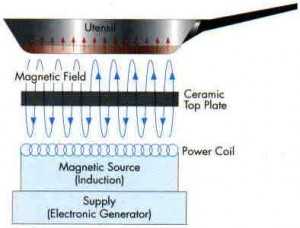Get over it gas devotees, the best way to cook up a gourmet meal is on an induction cook top. Induction cooking is not some radical new technology: it has been widely used (mainly in Europe) since the 1980’s both by professionals and homeowners. But in the last few years the technology has improved so much, and the costs have dropped so much, that a new wave of equipment, for both commercial and residential uses, has become available and is so superior that I think it might completely capture the field for new installations worldwide in the next few years.
OK Kati, but REALLY, what makes it so special? Gas IS the best, right?
No - Induction is completely different from all other cooking technologies because it does not involve generating heat which is then transferred to the cooking vessel, it makes the cooking vessel itself the original generator of the cooking heat.
Put simply, an induction-cooker element ("burner") is a powerful, high-frequency electromagnet, with the electromagnetism generated by sophisticated electronics in the "element" under the unit's ceramic surface. When a good-sized piece of magnetic material such as a stainless steel skillet is placed in the magnetic field that the element is generating, the field transfers ("induces") energy into that metal. That transferred energy causes the metal to become hot. By controlling the strength of the electromagnetic field, we can control the amount of heat being generated in the cooking vessel, which we can change instantaneously.
How Induction Cooking Works:
- The element's electronics power a coil that produces a high-frequency electromagnetic field.
- That field penetrates the metal of the ferrous (magnetic-material) cooking vessel and sets up a circulating electric current, which generates heat.
- The heat generated in the cooking vessel is transferred to the vessel's contents.
- Nothing outside the vessel is affected by the field--as soon as the vessel is removed from the element, or the element turned off, heat generation stops.
This translates into not only a better stir fry, but a more energy efficient and safe way to cook. Compare the energy usage of different types of cooking methods:
Efficiency of Cooking Methods
| Method | Efficiency |
| Induction | 90% |
| Halogen | 58% |
| Electric | 47% |
| Gas | 40% |
What this means is that using an induction cook top can result in greatly reduced power bills. Other tests show that induction cooking is faster than using gas, halogen, or even a microwave. As mentioned above, the induction is extremely safe. There is no risk of fire if food or grease overflows from the pan, no risk of burns from touching the surface, and no worry about dangerous fumes from gas or other cooking fuels. The ceramic glass surface can be cleaned by simply wiping off the surface with a damp towel. Although induction ranges are currently more expensive than their electric or gas counterparts, when all of these advantages are taken into account, the induction cook top will definitely pay for itself.
I’m not saying scrap your gas Viking today...But if you’re ready for an energy efficient, effective and safe way to cook induction is for you.


